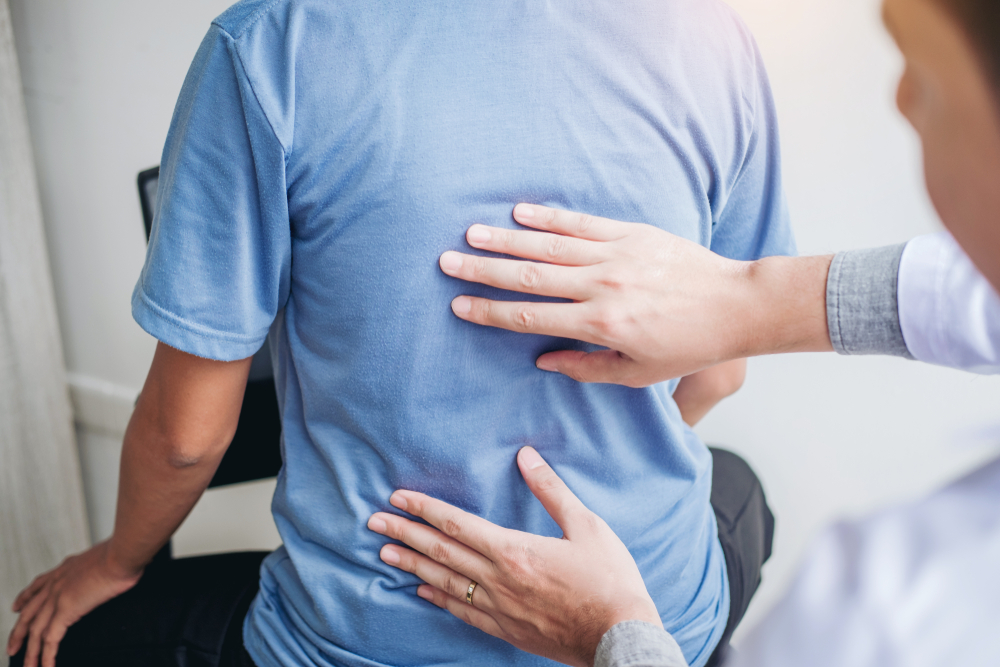Your spine comprises 24 vertebrae stacked on each other and divided into three regions. Seven vertebrae make up the cervical region in the neck, 12 vertebrae make up the thoracic region in the mid-back, and five vertebrae make up the lumbar region in the lower back. The spine also includes the sacrum and coccyx. Providing cushioning between the vertebrae joints are the spinal discs. In addition to providing cushioning during impact, the discs allow spinal movement and keep the vertebrae in place. Each disc has two parts: a soft jelly-like interior and a rigid outer ring.
What is a herniated disc?
A herniated disc occurs when the cartilage disc between the vertebrae is torn, and the jelly-like interior leaks out. Up to 20 out of every 1,000 adults experience a herniated disc annually. Males are two times more likely to experience a herniated disc than females. Herniated discs most often occur in adults aged 30 to 50.
What can cause a herniated disc?
In addition to gender- and age-related factors, several other factors can cause a herniated disc. Those factors include:
- Repetitive or improper lifting.
- Twisting or turning motions.
- Weight-bearing sports.
- Obesity.
- Smoking.
- Poor posture.
- Sedentary lifestyle.
- Trauma to the spine.
- Spinal stenosis.
- Connective tissue disorders.
A herniated disc can happen in any spinal region but is more likely to occur in the lumbar region. The most common herniated disc occurs at L4 to L5.
What are the symptoms of a herniated disc?
Each spinal region can have a herniated disc and present its symptoms. Symptoms for each region include:
- Cervical disc — Cervical herniated disc pain can present as pain or spasms in the neck or shoulder blade. It can cause pinched nerves, tingling, numbness or weakness.
- Thoracic disc — Thoracic herniated disc pain can present as abdominal, upper back or lower back pain. It can cause shooting pain down one or both legs or weakness in the legs.
- Lumbar disc — Lumbar herniated disc pain can present as lower back pain. It can also cause pinched nerves, which can cause pain in the buttocks, legs, or feet, and tingling, numbness, or weakness sensations.
Symptoms of a herniated disc can also present as difficulty standing, sitting or walking. A pinched nerve caused by a herniated disc can also cause a change in your bladder and bowel habits.
How is a herniated disc diagnosed?
If you suspect you have a herniated disc, it requires testing for a diagnosis. Your doctor will most likely order imaging to see what’s happening in your spine. Once you have a diagnosis, you will wonder what comes next. Not all herniated discs require surgery for improvement. Herniated discs often respond well to physical therapy, and your doctor can refer you to a physical therapist for treatment.
How can physical therapy help a herniated disc?
If you find yourself in pain, unable to perform your everyday activities, and have a herniated disc diagnosis, physical therapy can help. During your initial appointment, your physical therapist will fully examine you and your spine. The initial exam may include the following:
- Asking about the origin of your herniated disc.
- Checking your spinal mobility.
- Checking for pain locations.
- Checking your limb strength and range of motion.
- Checking your senses and reflexes.
Once the initial exam is complete, your physical therapist will design a customized treatment plan. The first goal of your herniated disc physical therapy will be to help relieve your pain and the pressure on your nerves, which can be causing additional issues. Your next physical therapy goal will be to strengthen and stabilize your core. Physical therapy for your herniated disc will then shift to building your endurance and flexibility. Your physical therapy work can help you find pain relief from your herniated disc and return to completing your normal daily activities.
Physical therapy techniques used to help treat a herniated disc include:
- Manual therapy — Manual therapy has several techniques that can be beneficial to help treat a herniated disc. Joint mobilization and soft tissue mobilization are both hands-on techniques that can be used to help relieve muscle tension and spasms causing pain.
- Hot and cold therapy — Heat therapy can help relax the muscles of your back, which can help relieve pain caused by muscle tension or spasms. Heat therapy allows blood vessels to open better, thus helping to improve blood flow. Cold therapy can help relieve inflammation causing added pressure to the nerves and help relieve pain. This is usually an at-home treatment, and your physical therapist can give you specific instructions.
- Electrical stimulation — Electrical stimulation provided by a TENS unit helps to override signals of pain sent to the brain from the herniated disc. It can also help reduce any muscle spasms you may be experiencing.
- Hydrotherapy — Hydrotherapy can be used as a passive or active treatment for a herniated disc. Passive hydrotherapy uses a warm bath or shower to help relieve pain and muscle tension. Active hydrotherapy uses exercises in the water to help strengthen your body without added stress on the body.
Our Panther Physical Therapy team can help you find relief from your herniated disc with physical therapy
A herniated disc can keep you from performing your normal activities. Our team of expert physical therapists can help you find pain relief with customized treatment for your symptoms. You can request a free screening with one of our specialists today.
Contact our team today for more information on how we can help you with herniated disc pain.

